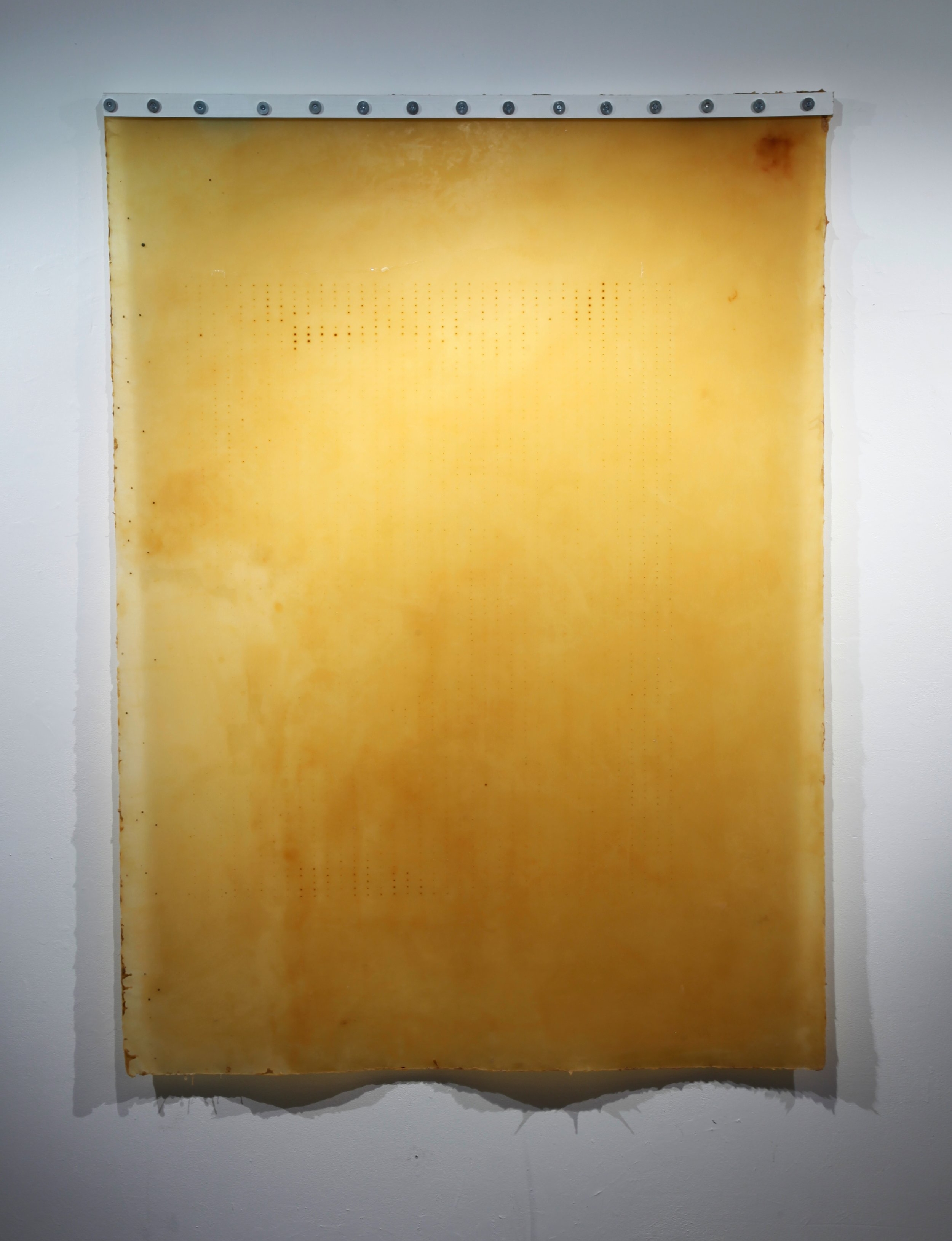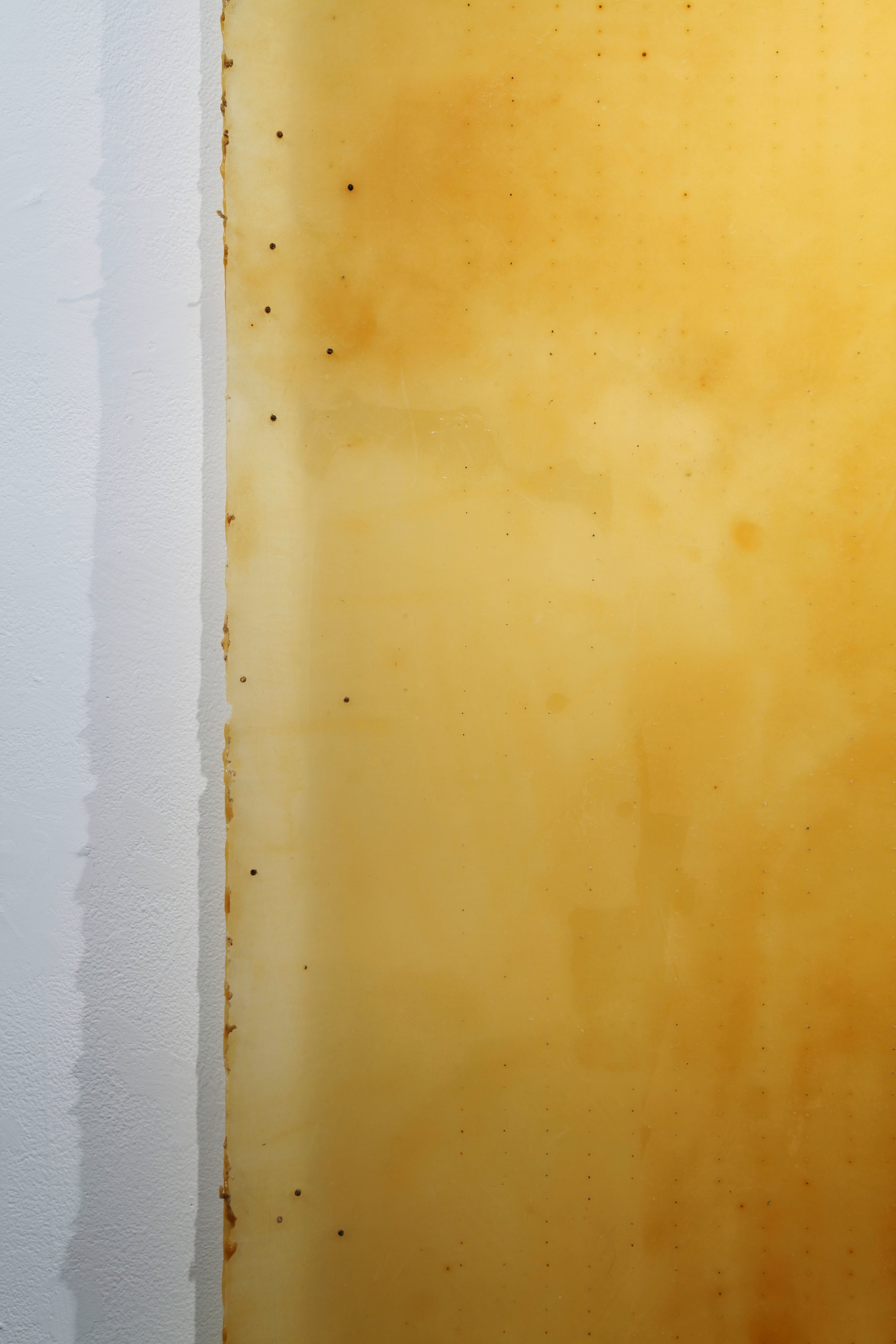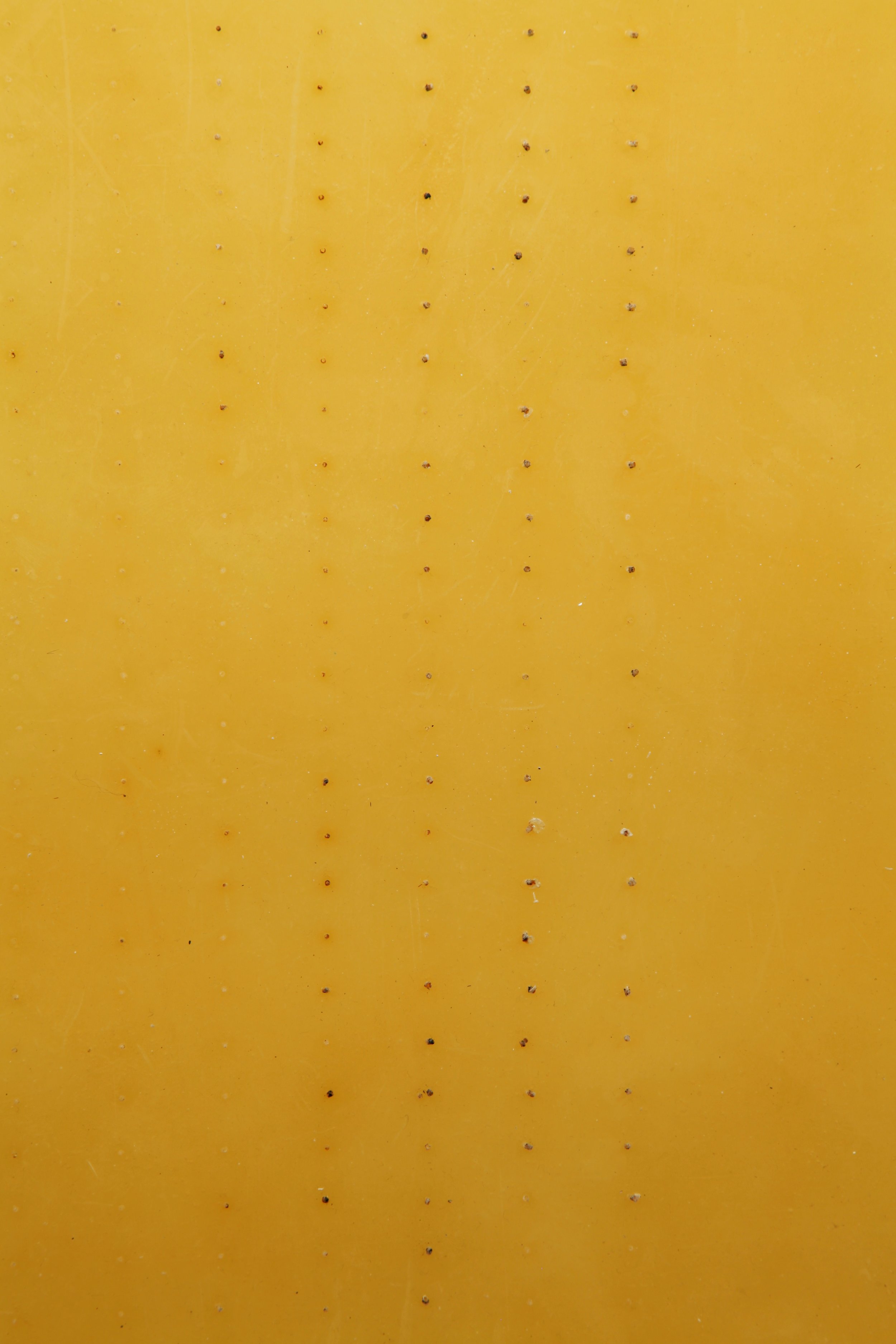1
2
3



untitled (338N)
latex and residue print. 51" x 70"
In wanting to shift into a more bodily material that was not as instantly recognizable, I started working with liquid latex. With the structureless consistency inherent in any liquid, I was able to apply layers slowly until a desired and stable thickness was achieved. untitled (338N) was the first print created in this way. The original surface, a repurposed vacuum table, resulted in a fairly uniform surface peppered with mole-like protrusions set out in a grid. Some have captured more dust and existing dirt than others, with the side of the table more regularly interacted garnering more heavily darkened spots due to this residual interaction. Upon closer inspection incisions and cuts become more obvious.
Branching into latex was my way of embracing dehiscence, or the rupture at the point where the surface has broke. “Pliant, plastic and rubbery”, “[s]kin is a multilayered, multipurpose organ that shifts from thick to thin, tight to loose, (…) across the landscape of the body”; latex applied to a skeletal structure, that of a table, echoes these properties of skin expressed in a written interview by Joseph Amatos, writer of “Surfaces: A History” and Ellen Lupton, curator of Cooper-Hewitt Gallery.
Permanently Unavailable.